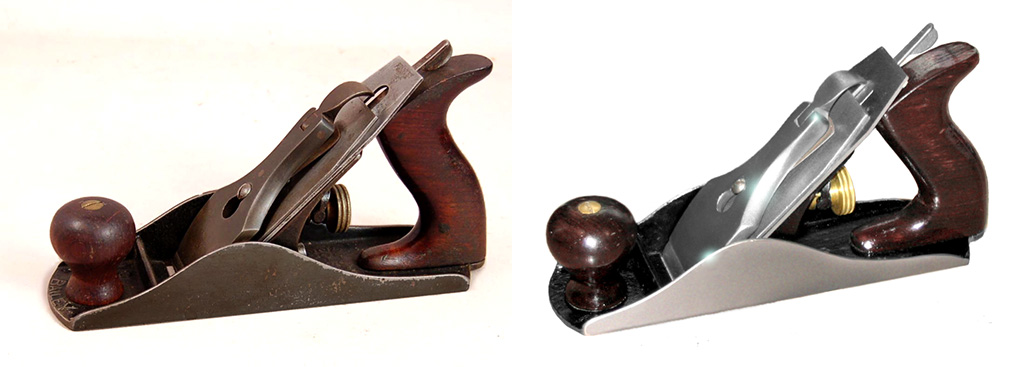Thanks for the contributions so far gents.
My idea for this thread was mostly to give tyros a more realistic idea of what steps need to be done to put an old plane back into service, and perhaps help a few who aren't beginners take a step back and reassess their process. Again the theme here is Only What's Necessary,
Anyone new to planes generally, some of the following applies to putting a new non-premium plane into service as well. All such planes require fettling, but how much is the thing to not make assumptions on and blindly go ahead with an hour + of work that doesn't need to be done.
Here's a fairly conventional list of what you need to do with any old metal bench plane you buy:
- Take the plane completely apart
- Dust off and degrease
- Remove all rust
- Sharpen the iron
- Fettle the leading edge of the cap iron
- Fettle all mating surfaces in the castings
- File the leading edge of the mouth
- Lap the sole
- Strip/sand/scrape the handles and refinish
- Oil and wax as appropriate then put it back together and try it out
Many people who have bought planes in goodish nick will be looking at this list and going "Huh?".
Here's what you might actually need to do:
- Clean the plane down as you prefer
- Check the position of the frog and adjust as needed
- Remove loose rust from the sole
- Hone the iron
- Check to see if the cap iron was previously fettled and then if it wasn't work on it if necessary
- Oil or wax all show surfaces
- Put the irons back in, adjust for a light cut and test how the plane works
All those missing steps (which represent the bulk of the time and effort) those are optional or conditional, not necessary.
Obviously many of us want our old planes to look nice and will do some or a lot of work to restore the looks, from just spruced up to like-new, but we all know that's additional work. In terms of just getting the plane in working order though, in a lot of cases you can get away with doing the absolute minimum. It's just that most people don't try, they forge ahead through the mental checklist of what 'needs' to be done without stopping to consider if step B or C needs to be done on the plane in front of them.
The most alarming omission here for some might be that all rust wasn't removed. Realistically it's nearly impossible to remove every last spec from all the nooks and crannies anyway and the simple fact is all traces of rust do not need to go. Any old tool with dark patina on the iron or steel? That's rust with oil or wax impregnated in it. Similarly the black in pits on tools that were once rusty, there's rust in there too, but it's perfectly stable and won't go deeper or spread as long as you keep up with your oiling or waxing routine. So remove the loose stuff, don't sweat the rest, because there's no reason to suppose the plane on the left won't perform just as well as the one on the right:

Now about lapping the sole. We'll address this in more detail later on, but you've probably gained the impression from the specs on some new planes that emphasise how flat they are, ground to tolerances of microns or whatever, and from reading books or forum posts that state a plane needs a dead-flat sole to work as it should. Because these are secondhand planes they had at least one previous owner/user so the #1 reason not to blindly go lapping the sole is they might have been fettled before. The #2 reason is:
if they're not dead flat they might still work fine. We should not be collectively assuming that every single plane out there has a sole that isn't flat enough to function well (same story with new cheaper planes). So check function first, then do some lapping if you find it's needed.
As for the iron, I say hone here instead of sharpen because often they don't need a complete resharpen. Most people do, but some of that is wanting to put our own stamp on it so to speak, but in keeping with the theme the sharpness of the edge is all that matters, and because of that a hone might be all that's required. I've seen many an old iron that still had some kind of edge, enough that you could use the plane as it was for rough work on softwoods. Plane irons in that sort of shape just need a quick hone to cut as well as they're capable of cutting.
Now, why
if necessary with the cap iron? Surely that leading edge needs to be dead on if shavings aren't to jam undereath? Well sure, if you're working on a smoother. But with most jack planes, fores, and sometimes with a jointer, it won't ever be set very close to the cutting edge so the straight-from-the-factory leading edge of the cap iron (crude those it is) should work just fine.





